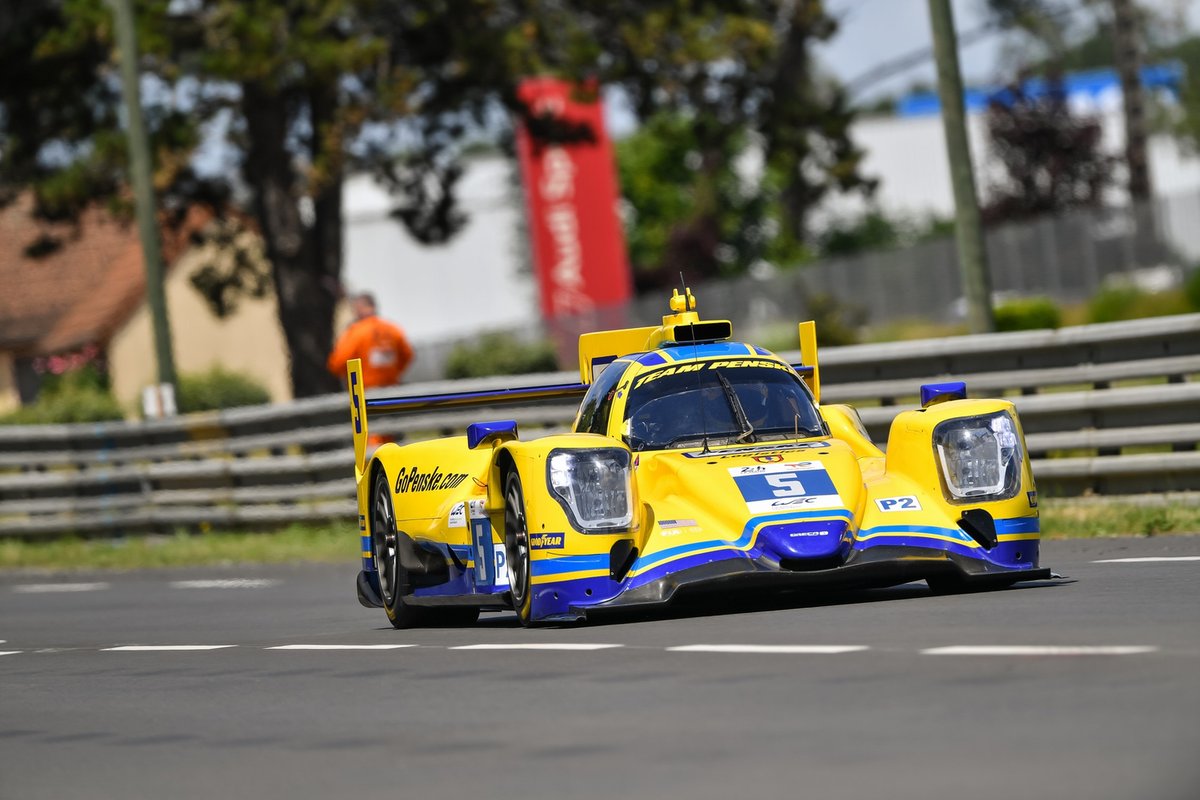
The new system dubbed Adjustment of Performance will involve the cars being balanced with minor tweaks up to twice a season on the basis of data gathered from the different series in which LMP2 is present around the world.
Automobile Club de l’Ouest president Pierre Fillon, whose organisation is jointly writing the new rules with the FIA, said: “We want all four brands to have the same chance to win; we will make an adjustment maybe twice a year.”
Thierry Bouvet, the ACO’s technical director, added: “We want to protect the market position of all the manufacturers.”
The decision to introduce the new system comes against the backdrop of ORECA’s domination of the current LMP2 formula introduced in 2017.
LMP2 has largely become a de facto one-make formula dominated by the French constructor, which recently delivered the 100th example of the ORECA-Gibson 07 LMP2.
The LMP2 field at this weekend’s Le Mans 24 Hours round of the World Endurance Championship is made up of 26 ORECAs and a solo Ligier JSP217.

The other two constructors licensed to build P2 machinery, Dallara and Multimatic, have no active competitors in the category at present.
The AoP system replaces two elements in the rules of a class that has a home in the WEC, the IMSA SportsCar Championship and the European and Asian Le Mans Series.
There is currently a provision for Balance of Performance changes, which was carried over from the regulations from the previous generation of P2 car introduced in 2011.
There has been only one BoP change in the seasons since: the Honda Performance Development twin-turbo engine was given a larger-diameter engine-air restrictor in year one of the category.
The regulations also allow for so-called joker upgrades with the agreement of rule makers.
Bouvet described the AoP as a “cost-efficient” replacement for the joker system.
Ligier, Dallara and Multimatic were allowed to make strictly-controlled updates between the 2017 and ’18 seasons.
Bouvet stressed that the AoP system remains a work in progress.
“The details still need to be defined,” he told Autosport.
“We haven’t decided when and how we will do it, but we will take an overall perspective.”
Fillon suggested that the performance balancing will be undertaken solely with tweaks to engine power.
The ACO has also left the door open for the introduction of hybrid technology some time in the five-year life cycle of the next LMP2 formula up to the end of 2030.
Fillon and Bouvet explained that it will be important to be able to react to regulatory changes in the future.

“Next-gen P2 will be from 2025 to ’30, but what will motorsport be that far ahead?” said Bouvet.
“Things are moving fast, so we have to be careful and leave the door open, or rather not close it.”
Fillon explained that it would be relatively straightforward to incorporate a rear-axle motor generator unit because the new LMP2 cars are based on the same spine as the forthcoming LMDh hybrids.
The final P2 rules for ’25 have yet to be finalised, but Bouvet suggested that they could be signed off in the coming months.
He said that the tender process for the one-make engine, currently a normally-aspirated V8 supplied by Gibson, will begin later this year.
Bouvet explained that the final performance targets for the next-gen P2 cars will only be set after the new breed of LMDh prototypes arrive in the top classes in the WEC and IMSA next year.
The ACO and the FIA has been striving to maintain what is sometimes called class differentiation between LMP2 and the Hypercar class in WEC.
P2 cars have been hit with a series of performance reductions since the beginning of last season.
The ACO and the FIA have involved the P2 teams in a consultative process designed to try to reduce costs in the class.
The use of a steel rather than carbon brakes, fibreglass bodywork and a production-based engine are all known to have been on the agenda.
It is also known that extending the life of the existing cars until the end of 2028 was also discussion.
The introduction of the new rules was set back until 2025 earlier this year, which represented a third delay for a formula introduced with a four-year life-cycle in 2017.




!["[T]he First and Fifth Amendments Require ICE to Provide Information About the Whereabouts of a Detained Person"](https://images.inkl.com/s3/publisher/cover/212/reason-cover.png?w=600)


